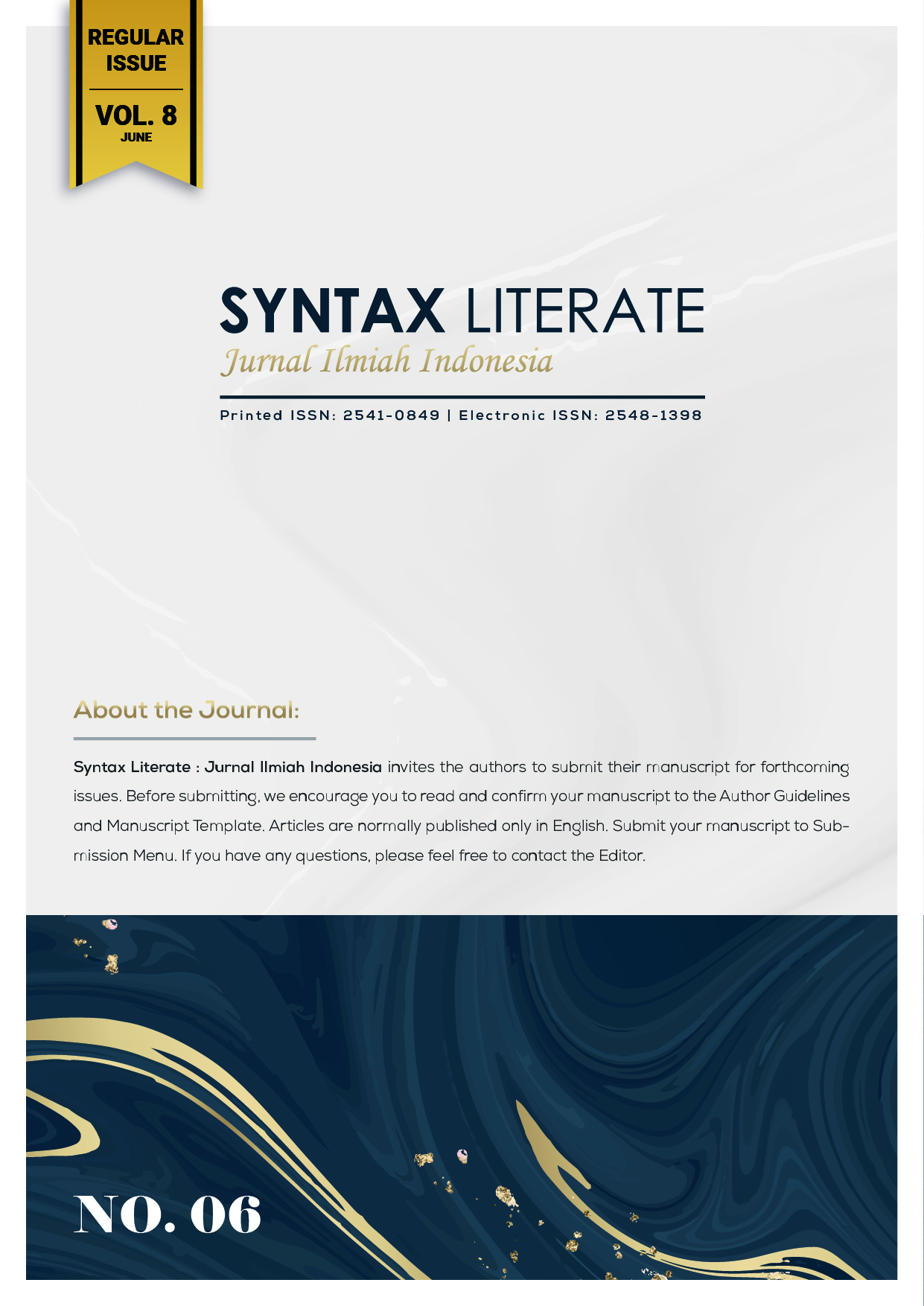Dampak Penguatan Layanan Kesehatan Primer Negara Thailand: Literatur Review
Abstract
Tujuan penelitian ini untuk memberikan gambaran aspek penguatan layanan kesehatan primer di negara Thailand serta menganalisis implikasi penguatan jangka pendek dan jangka panjang. Penelitian ini menggunakan metode literature review dengan mengumpulkan berbagai jurnal dan artikel terkait penguatan layanan kesehatan primer pada mesin pencarian PubMed, ProQuest, dan Google Scholar dari rentang waktu tahun 2012-2022. Kata kunci yang digunakan adalah “Penguatan Layanan Kesehatan Primer, Dampak dan Thailandâ€. Hasil penelitian ini adalah Strategi penguatan layanan kesehatan primer di Thailand dilakukan melalui aspek pemberian layanan yang berkualitas, pengembangan sumber daya manusia, pembiayaan, intervensi yang melibatkan masyarakat, serta pemanfaatan inovasi berbasis teknologi. Negara dengan struktur layanan kesehatan primer yang kuat memiliki pengeluaran kesehatan yang lebih tinggi di awal dan peningkatan umur harapan hidup serta penurunan angka kematian bayi dan balita. Upaya penguatan layanan kesehatan primer berdampak terhadap peningkatan pengeluaran kesehatan serta perbaikan indikator kinerja pembangunan kesehatan.
Downloads
References
Asgari-Jirhandeh, N., Zapata, T., & Jhalani, M. (2021). Strengthening Primary Health Care as a Means to Achieve Universal Health Coverage: Experience from India. Journal of Health Management, 23(1), 20–30. https://doi.org/10.1177/0972063421995004
Dodd, R., Palagyi, A., Jan, S., Abdel-All, M., Nambiar, D., Madhira, P., Balane, C., Tian, M., Joshi, R., Abimbola, S., Peiris, D. (2019). Organisation of primary health care systems in low- and middle-income countries: Review of evidence on what works and why in the Asia-Pacific region. BMJ Global Health, 4(Suppl 8). https://doi.org/10.1136/bmjgh-2019-001487
Haque, M., Islam, T., Rahman, N. A. A., McKimm, J., Abdullah, A., & Dhingra, S. (2020). Strengthening primary health-care services to help prevent and control long-term (Chronic) non-communicable diseases in low- and middle-income countries. Risk Management and Healthcare Policy, 13, 409–426. https://doi.org/10.2147/RMHP.S239074
Hermansyah, A., Sainsbury, E., & Krass, I. (2016). Community pharmacy and emerging public health initiatives in developing Southeast Asian countries: A systematic review. Health & Social Care in the Community, 24(5), e11–e22. https://doi.org/10.1111/hsc.12289
Hou, X., Liu, L., & Cain, J. (2022). Can higher spending on primary healthcare mitigate the impact of ageing and non-communicable diseases on health expenditure? BMJ Global Health, 7(12), e010513. https://doi.org/10.1136/bmjgh-2022-010513
Kringos, D. S., Boerma, W., van der Zee, J., & Groenewegen, P. (2013). Europe’s Strong Primary Care Systems Are Linked To Better Population Health But Also To Higher Health Spending. Health Affairs, 32(4), 686–694.
Kumar, P. (2016). How to strengthen primary health care. Journal of Family Medicine and Primary Care, 5(3), 543. https://doi.org/10.4103/2249-4863.197263
OECD. (2020, May 30). Realising the Potential of Primary Health Care, OECD Health Policy Studies. https://doi.org/10.1787/a92adee4-en
PHCPI. (2022). Thailand: Access | PHCPI. https://www.improvingphc.org/thailand-access-0
Ploysawang, P., Rojanamatin, J., Prapakorn, S., Jamsri, P., Pangmuang, P., Seeda, K., & Sangrajrang, S. (2021). National Cervical Cancer Screening in Thailand. Asian Pacific Journal of Cancer Prevention : APJCP, 22(1), 25–30. https://doi.org/10.31557/APJCP.2021.22.1.25
Sakboonyarat, B., Mungthin, M., Hatthachote, P., Srichan, Y., & Rangsin, R. (2022). Model development to improve primary care services using an innovative network of homecare providers (WinCare) to promote blood pressure control among elderly patients with noncommunicable diseases in Thailand: A prospective cohort study. BMC Primary Care, 23(1), 40. https://doi.org/10.1186/s12875-022-01648-4
Shi, L. (2012). The Impact of Primary Care: A Focused Review. Scientifica, 2012, e432892. https://doi.org/10.6064/2012/432892
Tejativaddhana, P., Briggs, D., Singhadej, O., & Hinoguin, R. (2018). Developing primary health care in Thailand: Innovation in the use of socio-economic determinants, Sustainable Development Goals and the district health strategy. Public Administration and Policy, 21(1), 36–49. https://doi.org/10.1108/PAP-06-2018-005
Tuangratananon, T., Julchoo, S., Phaiyarom, M., Panichkriangkrai, W., Pudpong, N., Patcharanarumol, W., & Tangcharoensathien, V. (2021a). Integrating NCD into Primary Health Care in Thailand: A Mix Method Study [Preprint]. In Review. https://doi.org/10.21203/rs.3.rs-208297/v1
Van Weel, C., & Kidd, M. R. (2018). Why strengthening primary health care is essential to achieving universal health coverage. CMAJ, 190(15), E463–E466. https://doi.org/10.1503/cmaj.170784
Veillard, J. (2019, May 20). Strengthening primary health care is the smartest way to reduce health inequalities. World Bank Blogs Investing in Health. https://blogs.worldbank.org/health/strengthening-primary-health-care-smartest-way-reduce-health-inequalities
WHO. (2017). PRIMARY HEALTH CARE SYSTEMS (PRIMASYS) Case Study from Thailand. 2017. https://apps.who.int/iris/rest/bitstreams/1344396/retrieve
WHO. (2021a). Progressing towards SDG Targets SRMNCAH SEAR 2020. https://apps.who.int/iris/bitstream/handle/10665/347423/9789290228660-eng.pdf?sequence=1
WHO. (2021b, April 1). Primary health care. https://www.who.int/news-room/fact-sheets/detail/primary-health-care
WHO. (2022). Global Health Expenditure Database. https://apps.who.int/nha/database/PHC_Country_profile/Index/en
Copyright (c) 2023 Wulansari Wulansari, Budi Hidayat

This work is licensed under a Creative Commons Attribution-ShareAlike 4.0 International License.











